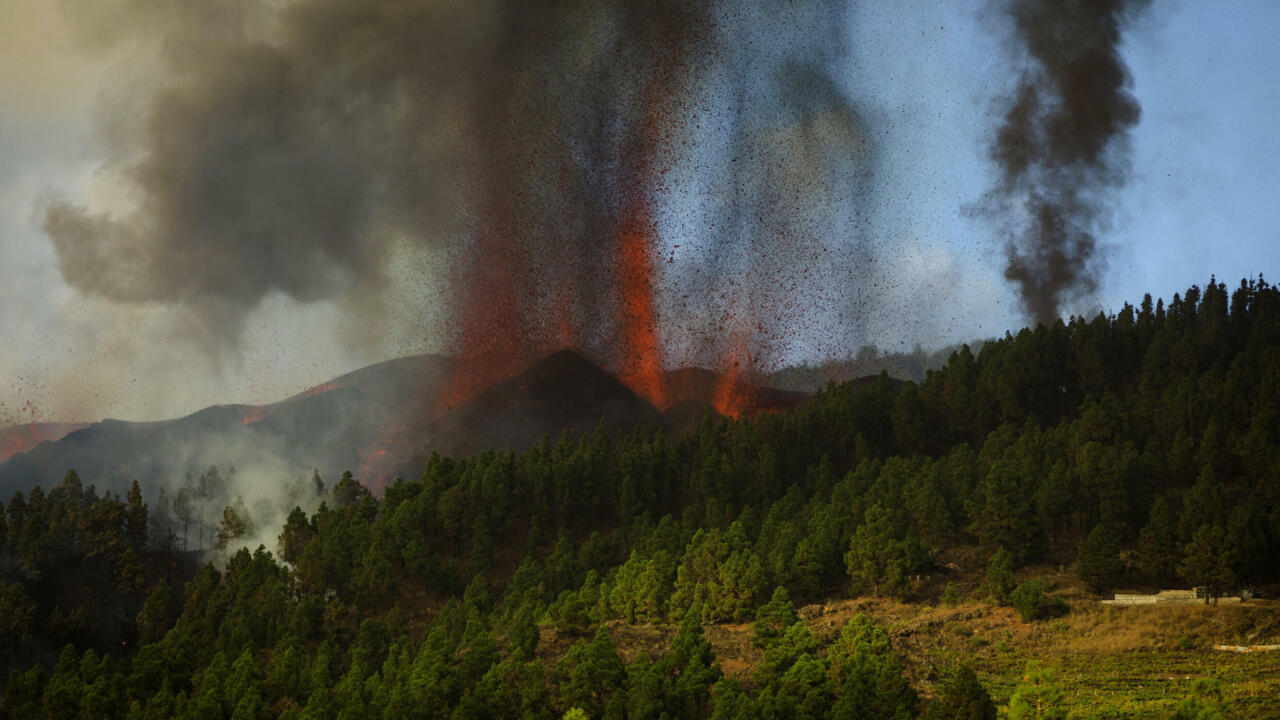Spain: the Cumbre Vieja volcano erupts in the Canary Islands
The Cumbre Vieja volcano had not erupted since 1971. AP - Jonathan Rodriguez
Text by: RFI Follow
1 min
This Sunday at 3.12 p.m., the Cumbre Vieja volcano erupted in the southwest of La Palma, one of the seven islands of the Spanish Canary Islands archipelago, very touristy.
The last eruption dates back to 1971, the penultimate in 1949. The event is important enough that the head of government Pedro Sanchez canceled a trip to the United States to go there.
Advertising
Read more
With our correspondent in Madrid,
François Musseau
The images are spectacular.
White smoke rises high in the sky from four eruptive vents, and lava flows can be observed on the slopes of the Montaña Rajada, towards the ocean.
The concern is very present, six municipalities and their 35,000 inhabitants are targeted.
So far, some 5,000 people have been evacuated, and authorities say 5,000 more are expected to meet the same fate soon.
Everyone is advised to barricade themselves in their homes, close windows and doors, and turn off the water, gas and electricity until the situation improves.
Vulcanologists are not surprised by the eruption of Montaña Rajada, which has seen thousands of low magnitude earthquakes over the past week.
The eruption was therefore to be expected, and it therefore occurred.
The civil authorities and the police have mobilized all means to protect the population.
In El Paso, the main town, the football field has been fitted out to serve as an improvised reception center.
For their part, scientists are less worried.
For them, the rash could last for days or even weeks, but in itself would not present a major danger.
Newsletter
Receive all international news directly in your mailbox
I subscribe
Follow all the international news by downloading the RFI application
google-play-badge_FR
Spain
Natural disasters

